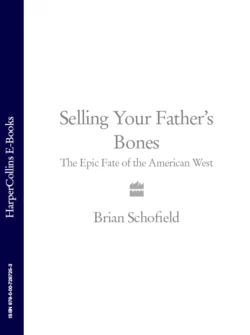Selling Your Father’s Bones: The Epic Fate of the American West

Brian Schofield
Тип: электронная книга
Жанр: Отдых, туризм
Язык: на английском языке
Стоимость: 992.66 ₽
Статус: В продаже
Издательство: HarperCollins
Дата публикации: 16.04.2024
Отзывы: Пока нет Добавить отзыв
О книге: Part historical narrative, part travelogue through the wilds of the West and part environmental polemic, ‘Selling Your Father′s Bones’ is a thrilling journey through the history and wilderness of the stunning area of landscape that is Continental USA.In the summer of 1877, around seven hundred members of the Nez Perce Native American tribe set out on one of the most remarkable journeys in the history of the American West, a 1,700-mile exodus through the mountains, forests, badlands and prairies of modern-day Oregon, Idaho, Wyoming and Montana. They had been forced from their homes by the great wave of settlement that crashed over the West as the American nation was born.Led by their charismatic chiefs, the Nez Perce used their unerring knowledge of the landscapes they passed through to survive six battles and many more skirmishes with the pursuing United States Army, as they raced, with women, children and village elders in their care, towards the safety of the Canadian border. But all Chief Joseph, the young pastoral leader of the exodus, wanted was to return home – to his beloved Wallowa valley, which his dying father had ordered him never to abandon: ′Never sell the bones of your father and your mother.’Now, Brian Schofield retraces the steps of that epic exodus, to tell the full dramatic story of the Nez Perce′s fight for survival – and to examine the forces that drove them to take flight. The white settlement of the West had been largely motivated by patriotic fervour and religious zeal, a faith that the American continent had been laid out by God to fuel the creation of a mighty empire. But as he travels through the lands that the Nez Perce knew so well, Schofield reveals that the great project of the Western Empire has gone badly awry, as the mythology of the settlers opened the door to ecological vandalism, unthinking corporations and negligent leadership, which have lest scarred landscapes, battered communities and toxic environments.